 Odyssey in the Arctic with the Russian Icebreaker Fleet
Odyssey in the Arctic with the Russian Icebreaker Fleet The nuclear-powered icebreakers were considered the symbol of Soviet technological power for many decades. Today this fleet is still used to aid ship navigation in the seas north of Siberia - but also for the purpose of elite tourism, which surely helps to pay the bills.
The most powerful of all icebreakers - "50 years of Victory" (one of six "Arktika" class)- has two nuclear reactors and is capable of reaching North Pole in just a couple of days.

"Vaigach" and "Taimyr"
Svetlana Bogdanova has recently returned from a very special trip on board the icebreaker "Vaigach" and provided us with these unique photographs. Thanks to her exclusive permission (including collection of photos from the seamen of the Murmansk Sea Shipping Company) we can now offer you a glimpse of what it really means to follow along the caravan of ships in the Northern seas, led by a colossal nuclear-powered vessel.


(top: nuclear icebreaker "Yamal", via)
Svetlana says: "A nuclear icebreaker almost feels alive, like a huge proud creature with a benevolent and dependable character. See it moving in the dark of night, projecting a powerful light ahead, making the snow sparkle in a misty path, feel it tremble under your feet... Its sheer immensity is inspiring, making one think of heroic exploration of unknown lands, the stuff that kids should be dreaming about".
"Vaigach" in the mist:

The blizzard is getting worse:


Unexpected Rescue:
This truck got in trouble on treacherous ice, so a professional team quickly comes up with a plan:

The journey resumes:

Breaking the way for a caravan of ships:

"30 Days of Night"...
Arriving into Dixon: a small town of about a thousand people -

Its population lives in the Arctic wasteland, enduring the most extreme climate. A significant part of Dixon has become a ghost town during Soviet years - and a series of ghastly buildings line up to haunt the endless night:


It's easy to start imagining vampires... but these buildings are long abandoned. Though one has to wonder about this cannon-looking thing left nearby:

Back to the Arctic trail
Serene and wonderfully wide-format views along the way - the Svalbard archipelago:


Franz Josef Land has some fascinating rock formations:

And mammoth fossils are simply everywhere, just lying around (left). On the right is an object that looks like a rusted bomb:

A day in the life of Murmansk Sea Shipping Company
A custom paint job looks aggressive on an icebreaker (appropriately enough):

Launching the deep sea research vessel (Bathysphere) "MIR-1":

Encountering some heavy seas:

"Yamal" towing the oil rig:
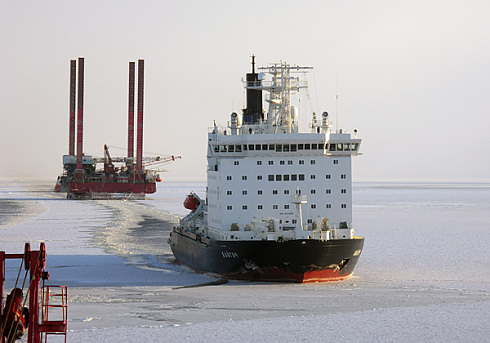
Land-based oil rigs are usually towed by a chain of tractors:
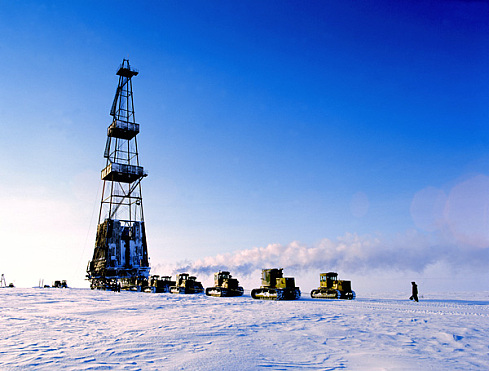
Staying in port for maintenance:

Here are Some of the Giants of the Arctic Fleet:
"Lenin" was the first Russian nuclear icebreaker, built in 1957. It looked imposing, but suffered two nuclear accidents while in operation till 1989, and now is being converted into a museum ship. Another milestone: "Arktika" became the first surface ship ever to reach the North Pole in 1977.
"50 Years of Victory" - is the largest, most powerful icebreaker ever constructed.
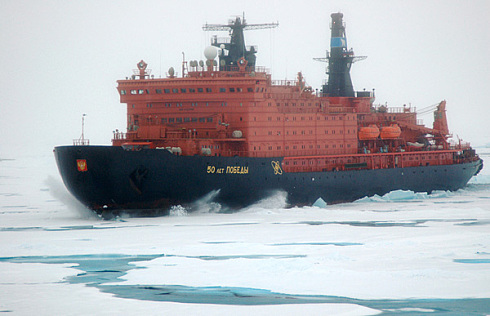
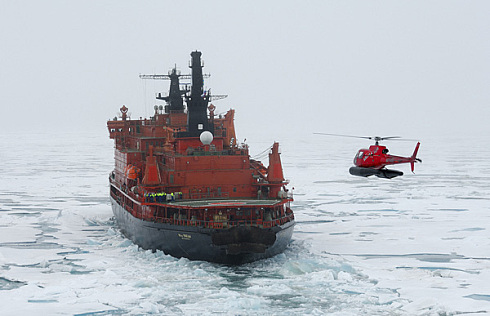

(image credit: Quark Expeditions)
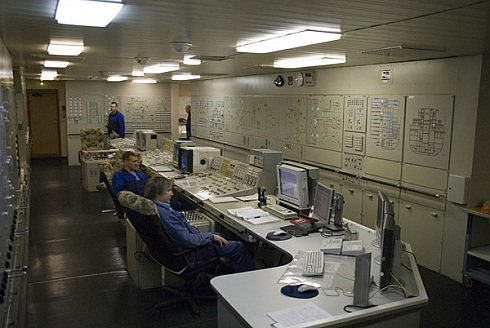
This lid covers a nuclear reactor:

Nuclear reactor room:
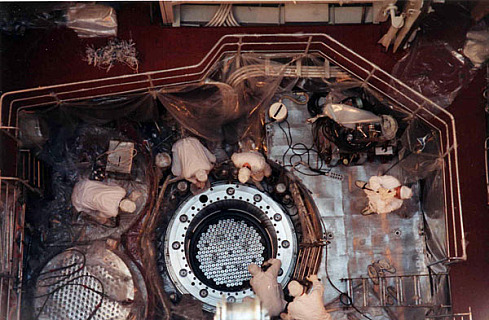
117 meters in length, the "50 Years of Victory" has TWO nuclear reactors, develops around 500,000 horse power, and its huge steel ice belt 5 meters wide can easily break through ice up to 2.5 meters (9.2 feet) thick. (The "victory" in its name is the Russian people's victory over the Nazis in 1945)
And by the way, in case you're thinking that no ice can ever stop such behemoths, let me remind you that the nuclear icebreaker "Soviet Union" was trapped in ice for three days in 1998 (which is nothing compared to Mother Russia trapped in communism for 70 years)
Here is that "Soviet Union" ship -
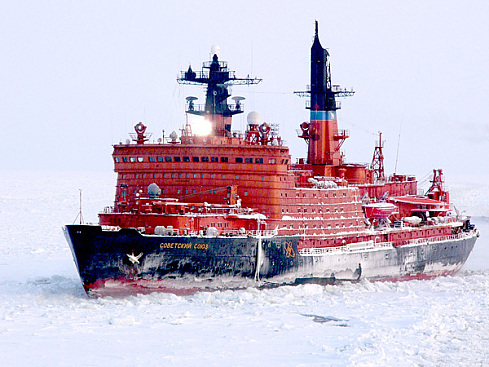
The rest of 10 nuclear icebreakers are described in detail here.
Bears just wanna have... milk
Polar bears lead pretty eventful life: from "romantic" courtships to intense family squabbles:

However, if they spot a passing ship, they will drop everything and try to get closer, knowing exactly what they want.

>They will surely start begging for their most favorite treat - condensed sweetened milk in cans: (not healthy of course, but simply irresistible)
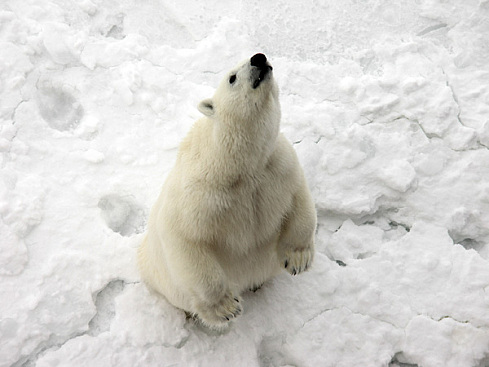
They try to stretch their meal: one can will keep a bear occupied for up to 3 hours. After they lick the can clean, they start to chew on it, like some sort of chewing gum - to get that last whiff of flavor.
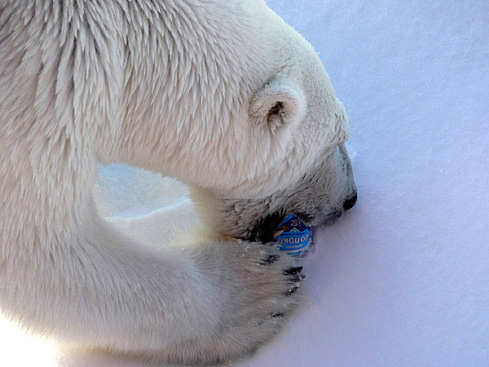
Finally, to sleep with a full tummy:

Polar bear tracks:
Note: if price is no object, Quark Expeditions will offer you exclusive trips to the North Pole on board of these icebreakers.
More ghosts per capita than any continent
Does Antarctica have the most ghosts of any continent? On a per capita basis, the answer is yes.

While the South Pole and environs doesn’t have a permanent population, there are on average 2,500 people living there during the year -- approximately 4000 in summer and 1000 incredibly hardy ones in winter (source). While no complete necrologies exists for the Antarctic, at least 268 people have died there since humanity first decided it was a good place to visit. So if the ghosts divvie the work evenly, each one only has to haunt 9.68992 inhabitants. (Some lists of who has died way down south include a certain Mrs. Chippy. I have chosen to leave her out of my calculations as she was a cat and if we include her we have to include penguins and then it’s Katy bar the door.)
Antarctica is a very popular place to abandon
In addition to having a light work load, Antarctic spirits also have an abundance of residences to choose from thanks to the huge number of ghost towns and other such haunts. For obvious reasons, Antarctica is a very popular place to abandon. Below is a map of places abandoned by just the British on the Antarctic Peninsula.

(image credit: United Kingdom Antarctic Heritage Trust)
The most famous and disturbingly well-preserved of these places is the camp built by Robert Scott and his party on Ross Island in 1911. The seaweed-insulated wooden cabin and its outbuildings were supposed to be the team’s shelter when they returned from their attempt to be the first people to visit the South Pole.

(images credit: 1, 2)

Robert Falcon Scott is shown on the top right (photos by John Weaver and Herbert Ponting)
Scott and four others -- Edward Wilson, H. R. Bowers, Laurence Oates and Edgar Evans -- set out from the base to reach the pole. They reached it on Jan. 17, 1912 only to find that the Norwegian explorer Roald Amundsen had gotten there weeks before them. All five men died trying to get back to the base camp. The final three – Scott, Wilson and Bowers – were just 11 miles from it when they died.

photos by John Weaver
Today this hut can easily be visited as it close to both the US Base at McMurdo or New Zealand's Scott Base. Be warned though, global warming is beginning to take its toll and the 100-year-old seal blubber which had been in deep freeze has begun to smell “quite rancid.” Go here if you would like to support efforts to preserve the huts. Here is the Evans Hut; on the right is the seal blubber...
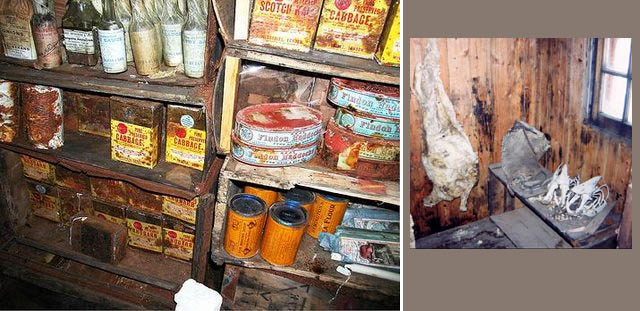
(images credit: 1 and 2)
Deception Island is a deceptive place indeed
The oldest actual ghost town can be found at Whaler’s Bay on Deception Island. Here is an abandoned Deception base:

(images credit: Lyubomir Ivanov and Sergio Pitamitz)
and a Deception hangar -

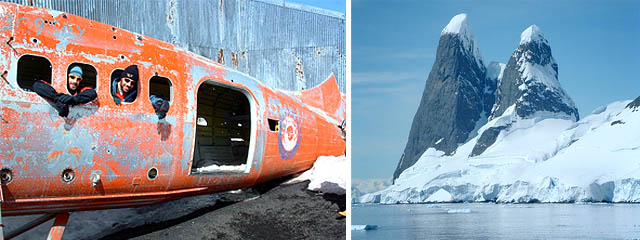
(images credit: David Zaks and Lyubomir Ivanov)
In 1906 a Norwegian-Chilean whaling company started using Whalers Bay as a base for a factory ship. Other whaling operations followed suit and a boom town was born. Whalers Bay was abandoned in 1931 following a precipitous decline in the market for whale oil, a result of the Great Depression.
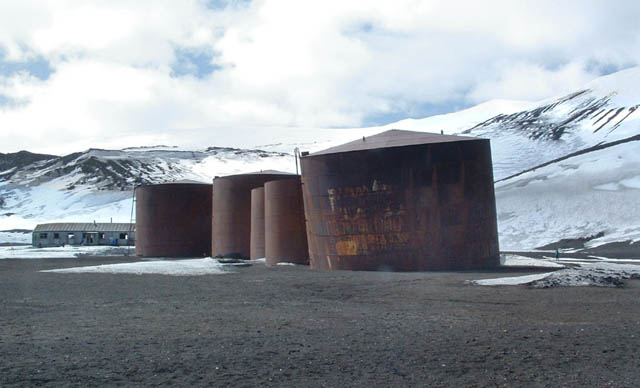
(image credit: David Zaks)
Do not be deceived, however. The rest of Deception Island is actually a fairly hopping place. In addition to science bases operated by Spain and Argentina, it is also one of the more popular tourist destinations in the Antarctic. This is probably because (thanks to volcanic activity) the island actually has places where one can be warm.


(images credit: David Zaks)
Creepy whaling outposts, left to wither in the winds of time

(image credit: expeditions.com)
South Georgia is another Antarctic island that people rushed to abandon. At least seven whaling communities existed there during the first half of the 20th century. When all were up and running the island was estimated to have 2,000 people living on it. Most of the towns are in the process of returning to a state of wilderness but some buildings – notably in the town of Grytviken – have been kept up and are also becoming a tourist destination.

(image credit: Wolfratz)
Stromness Harbour boilers and power generators:
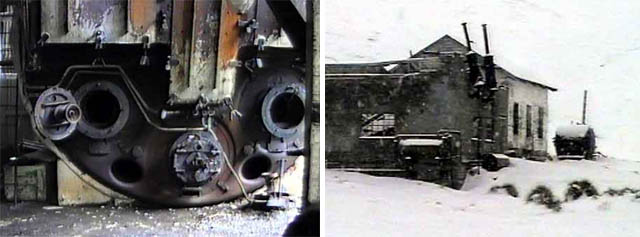
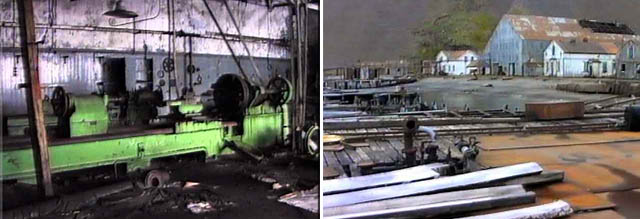
(images credit: mclaren.gs)
Portuguese graveyard, and a huge Leith Harbour whaling ghost station:
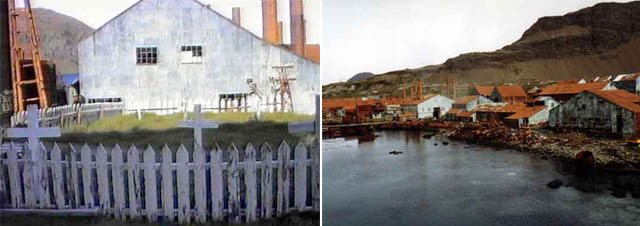
Grytviken ships "Dias" and "Albatros":

The whaler's cinema... and some old harpoon guns.
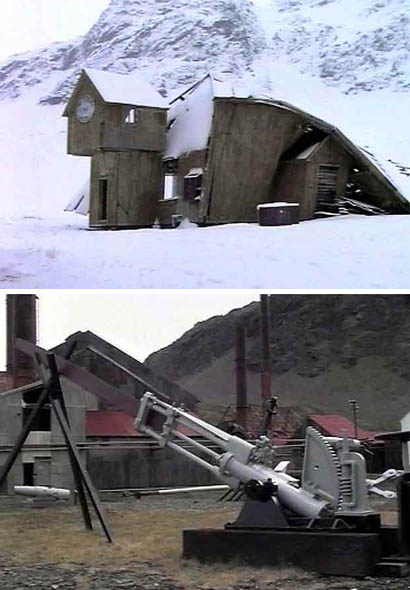
(images credit: mclaren.gs)
It is worth noting that these frozen islands have been the subject of heated arguments over who actually owns them – mostly by the UK and Argentina. Deception was initially claimed by the UK and then apparently ceded to the Argentines. South Georgia and the South Shetland islands are still possessed by the UK. The dispute over ownership of South Georgia was a contributing factor in The Falklands War (described by Argentine writer Jorge Louis Borges as “two bald men fighting over a comb”) and was briefly occupied by the Argentines. It is possible wars have been fought over more useless pieces of real estate but none come to mind.

(photos by Richard Harrington)
Slicing through the silence...
...the ghastly tall ship arrives. The Almirante Brown Research Station - abandoned by Argentina, awaits in the mist:

(image credit: Scotus)
The Real "Mountains of Madness"
One other thing that would attract ghosts to Antarctica: It’s the only place on the planet where they have their own mountain range. The Gamburtsevs is a range of mountains practically at the center of the continent which geologists call the "ghost range". Despite being of a size comparable to the Alps they have never been seen by humans, nor is it likely they ever will because they are covered by up to 4km of ice. Researchers are currently seeking to map the mountains using radar and other methods. (more info)
And then, there are meteorites bombarding Antarctica (which is considered to be a "meteorite collector" - most of our knowledge about meteorites comes from there) Scientists go out in snowmobiles to hunt for meteorites (kind of like picking mushrooms), spotting and recovering them from the East Antarctic Icesheet:
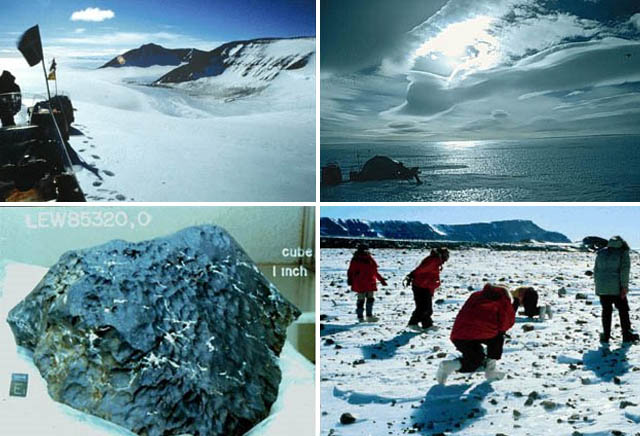
(images credit: The Antarctic Search for Meteorites)
Some meteorites arrive from Mars, some come from further reaches of space... All this somehow gets me thinking about unmentionable parasitic alien organisms, so I better stop at this point.









Sem comentários:
Enviar um comentário